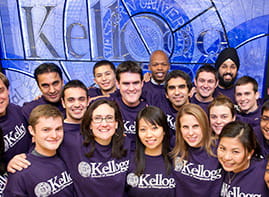The longer the media covers a boycott, the greater the impact on a company’s stock price, Assistant Professor Brayden King finds
11/16/2011 - Falling stock prices and corporate boycotts go hand in hand, according to new research from the Kellogg School.
The study by Kellogg Assistant Professor
Brayden King explores the fiscal impact of media coverage on corporate boycotts. King discovered that the stock price of a targeted company dropped nearly 1 percent for each day of national print media coverage.
“The question central to my research was: If boycotts do not change consumer behavior, then why do they bring about change?” said King, who teaches management and organizations.
King found that even if consumer behavior was unchanged by a boycott, a company’s stock price and reputation were not. When King analyzed the fiscal impact of a boycott on a targeted firm’s stock price, he found the impact was immediate and significant. Targeted firms saw an average decline in their stock price of half a percent after the initial announcement of the boycott. If the boycott endured, the targeted company saw an average decline of .7 percent for each day it received national media coverage.
King’s research represents one of the first systematic analyses of a large set of boycotts. The study focused on 133 separate boycotts launched between 1990 and 2005 that caught the attention of five national newspapers: the
New York Times,
Washington Post,
Wall Street Journal,
Chicago Tribune and
Los Angeles Times. In all, 177 firms were targeted. Such boycotts are surprisingly effective, with about 25 percent generating a concession from the target company.
The importance of reputation
King believes the data reveals a clear link between reputation and media coverage. In his work, King looked at each boycotted firm’s position on Fortune magazine’s “Most Admired” list. He found that firms with a stellar reputation were initially unaffected, but since these companies were such unusual targets, they quickly attracted a higher level of media attention than boycotts against firms with a low reputation or no ranking at all.
Boycotted firms with a high reputation ranking generated 4.4 times the coverage generated by boycotts against unranked firms, three times the coverage of firms in the lower quartile, and six times that of firms in the middle.
King says that since the highly-admired firms are perceived as placing a higher value on the link between their reputation and their profitability, they have a stronger incentive to resolve boycott issues quickly.
“If you are a high-reputation company, you are better off conceding early rather than letting the game play out and letting the media attention overwhelm you,” said King. “Low- and middle-reputation companies are less at risk, and the long-term consequences are less damaging to them.”
Dispelling the myths about boycotts
The popular myth about boycotts is that they emerge spontaneously from grassroots movements. In fact, the larger and more organized the organization that launches a boycott, the more likely it is to succeed.
“What I find is that formally-organized organizations are much better at generating media attention, probably because the media knows them already,” King explained. “It could also be that they have a stronger infrastructure or better public-relations professionals.”
Whatever the case, said King, the importance of media coverage to a boycott’s success puts a premium on the ability of the organization running the boycott to generate sustained coverage. He notes that when a public demonstration or a celebrity spokesperson is added to the mix, it adds to the news value of the boycott, leading to expanded coverage and therefore a bigger impact on the reputation of the target company.
King says that boycotts such as those in the Civil Rights Movement brought about social and legal changes because these protests had a direct impact on the profitability of businesses.
“In more recent years, as the companies have come to rely extensively on image and reputation, the importance of reputation and positive media coverage appears to have changed the mechanism of a boycott’s greatest influence, thus making it an attractive tactic for movements of all types,” he wrote.
The study, “The Tactical Disruptiveness of Social Movements: Sources of Market and Mediated Disruption in Corporate Boycotts,” appears in the November issue of the journal
Social Problems.






